CHOKING PLANET
Smoke from Canada’s wildfire spreading around the globe, heightening concern over air quality, human health
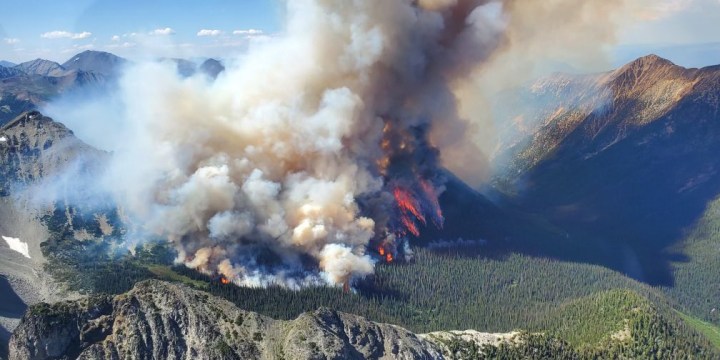
Around the world, fires are burning longer and hotter, as drought conditions mean both higher temperatures and longer fire seasons.
People who have asthma, chronic obstructive pulmonary disease and heart disease are most severely affected by smoke. Older people and children with asthma and serious health conditions are also at risk.
Canada is currently experiencing its worst fire season yet, and the season still has weeks to run. By the end of June, satellite images showed Canada’s smoke had reached much of the US – with 21 states warning people about air quality – and even reached Europe. The Nasa Earth Observatory noted that smoke had reached southwestern Europe and was most visible over Portugal and Spain.
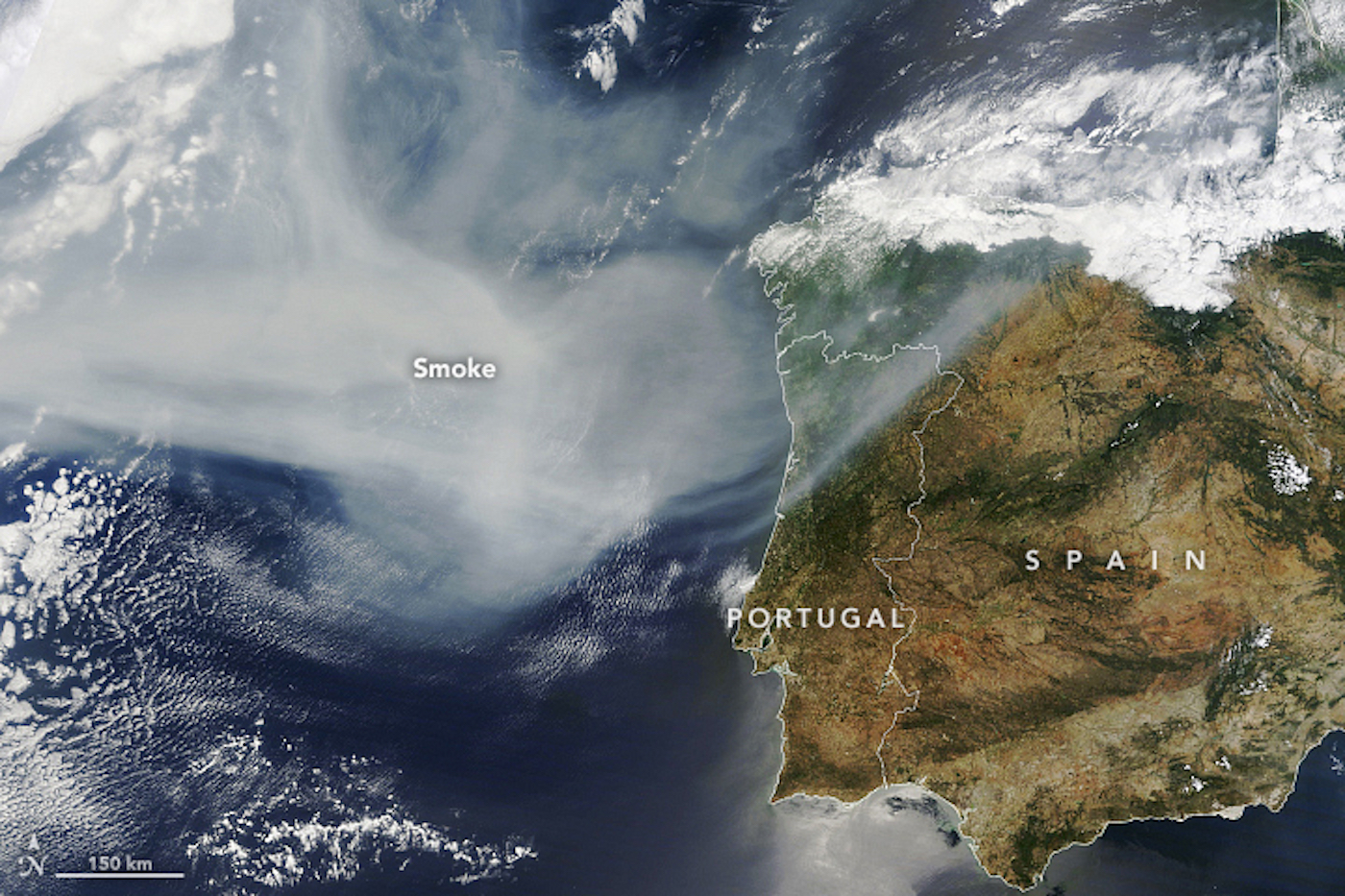
A Nasa Earth Observatory satellite image, taken on 26 June, showing smoke from Canada’s wildfires reaching Spain and Portugal.
Canada’s Minister of Emergency Preparedness, Bill Blair, confirming 2023 as their worst fire season in history, said: “We’ve had very serious fire seasons in the past, but this one just by sheer volume exceeds our historic experience.”
On July 13 the Canadian Interagency Forest Fire Centre’s (CIFFC) National Fire Situation Report said there were 904 active fires – of which four were new, 574 were out of control, 218 were under control and 112 were “being held”, which means under prevailing conditions and with the present manpower, those blazes should not spread any further.
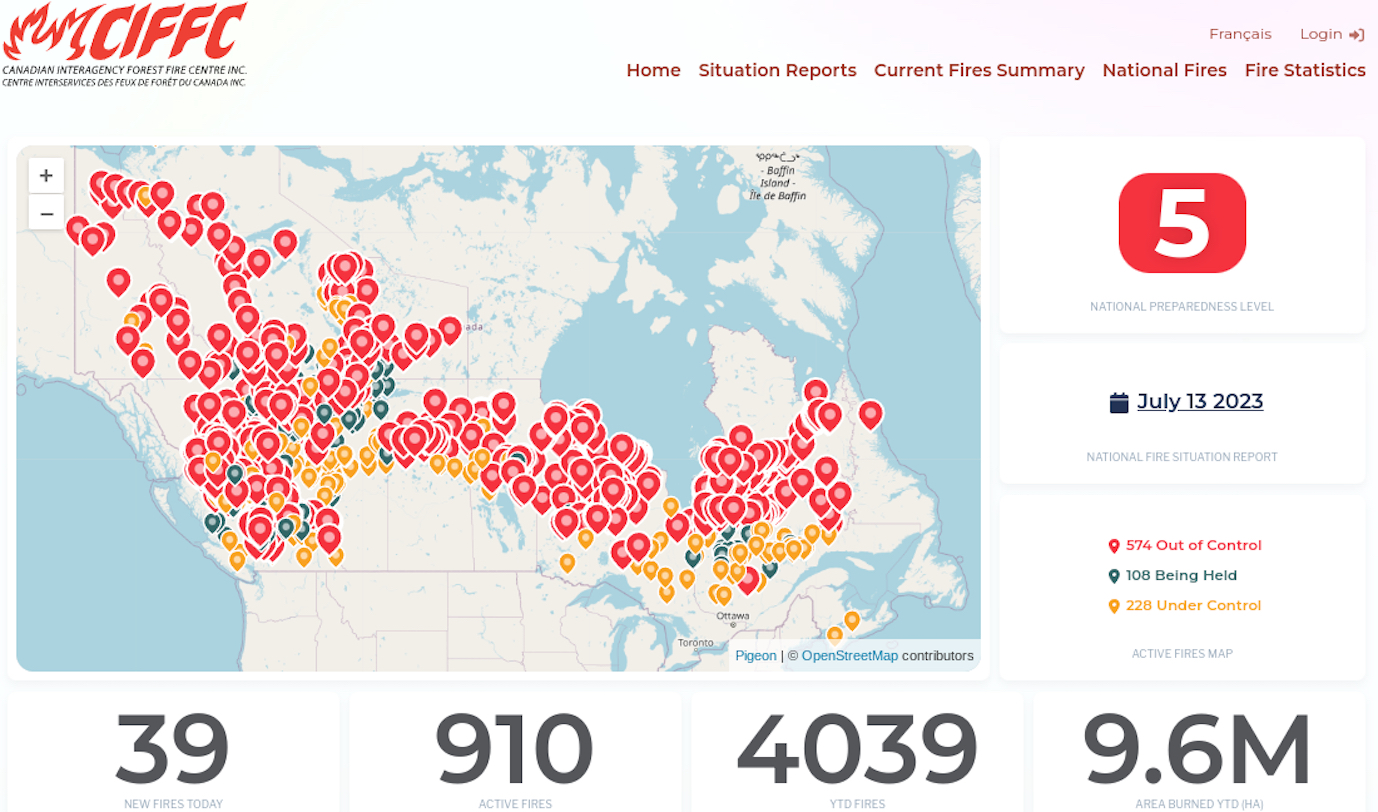
CIFFC daily fire report, 13 July 2023. (Canadian Interagency Forest Fire Centre)
On Sunday the British Columbia fire service reported 98 new fires in 24 hours – and said that most of these (three quarters) had been started by lightning.
The toxicity of ambient aerosol increases as it ages in the atmosphere, increasing up to four times the values seen in fresh smoke.
A study of wildfire smoke in Europe, the Pyrogenic TRansformations Affecting Climate and Health (PyroTRACH) project addressed “the topic of biomass burning (BB) and how it can affect particulate matter in the atmosphere… because aerosol from BB is highly toxic, interacts with solar radiation and can affect cloud formation and evolution.”
PyroTRACH has followed wildfires in Greece and the Mediterranean region for about four years and has found that wildfire smoke, as it ages in the atmosphere, becomes up to four times more toxic:
“From analysis of ambient samples collected to date, we find that the toxicity of ambient aerosol increases as it ages in the atmosphere, increasing up to four times the values seen in fresh smoke”.
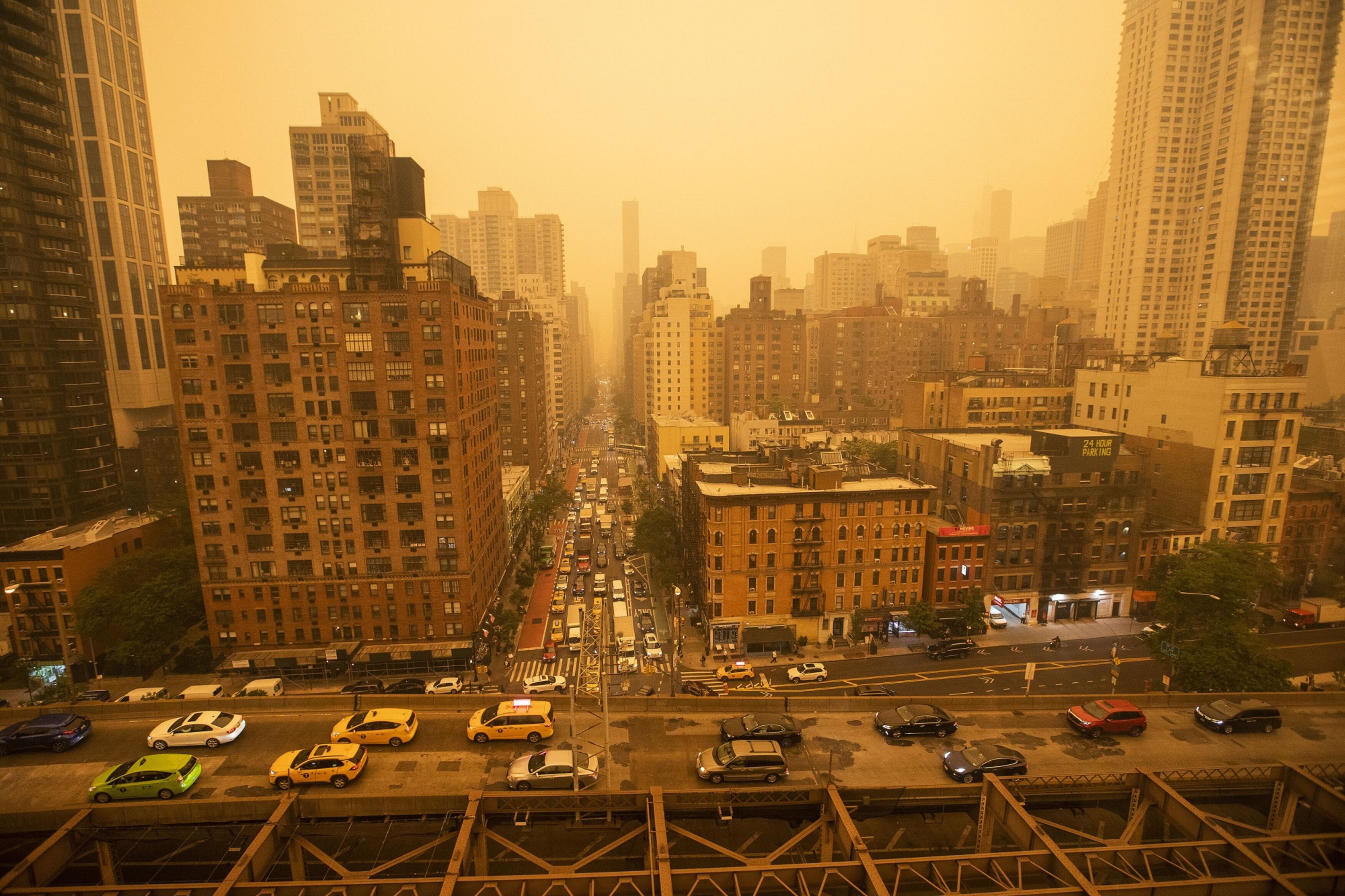
Traffic moves over the Ed Koch Queensboro Bridge as smoke from Canadian wildfires casts a haze over New York City on 7 June 2023. (Photo: Eduardo Munoz Alvarez / Getty Images)
Wildfire smoke, says Science.org, can remain in the atmosphere for weeks, possibly months. A research study (“Chlorine activation and enhanced ozone depletion induced by wildfire aerosol”) by the Massachusetts Institute of Technology, co-authored by Dough Kinnison from the National Centre for Atmospheric Research, focused on the Australian wildfires of 2019-2020. Kinnison says the research demonstrates that “wildfire smoke can have a profound influence on stratospheric chemistry”.
Speaking to Daily Maverick from Alberta, Canada, at the start of July – where South African firefighters are still helping to put out fires – Working on Fire’s Trevor Abrahams said he had seen reports that “160 million tonnes of pollution has gone into the atmosphere from the fires to date”.
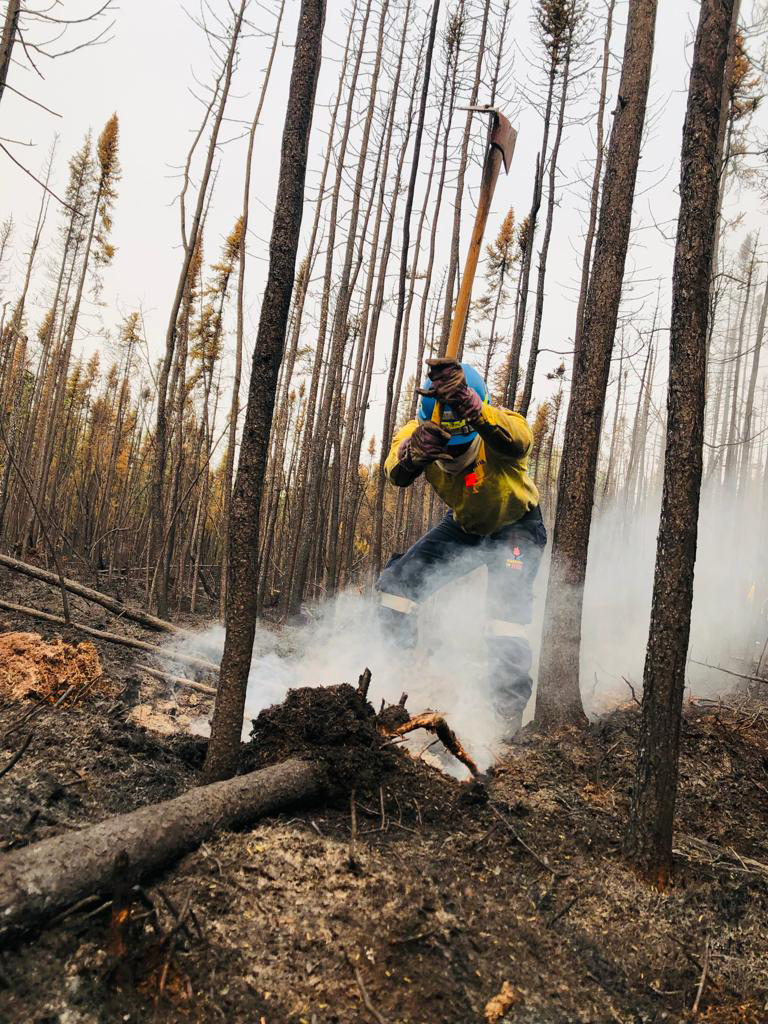
A South African firefighter works against a smoke-filled sky in Alberta, Canada, on 11 July 2023. (Photo: Working on Fire)
A 2020 special report titled “Wildfires, Global Climate Change, and Human Health”, says “human-induced climate change”can be seen most vividly when looking at wildfires. The report studied wildfires in Australia and Brazil’s Amazon rainforest (2019-2020), the western US (2018 and 2020) and Canada’s British Columbia (2017 and 2018), and called the wildfires “a vivid manifestation” of human-induced climate change.
The report also points to lightning strikes (“A single stroke of lightning can heat the air around it to 30,000°C (50,000 F)!) becoming a more common occurrence as the continent heats up. Hot air, as it rises, cools and forms precipitation, which, when the atmosphere is unstable, leads to thunderstorms and lightning – a huge problem in Canada’s current ongoing wildfires.
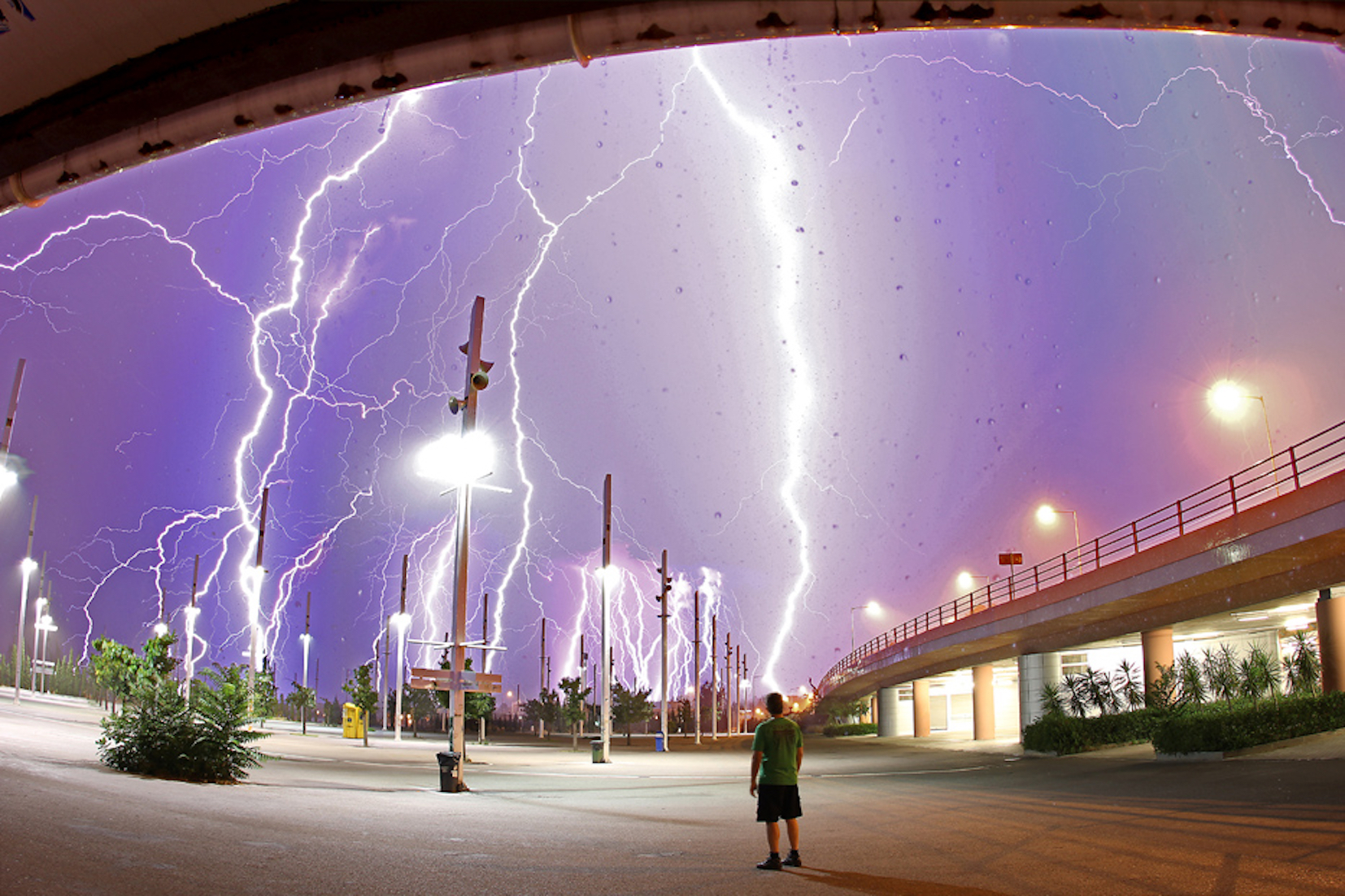
Photo: Nasa
One of the authors of the report, Michelle Bell, tells Daily Maverick that currently Canada’s smoke has affected US areas “from the Northeast to the Midwest. Some areas had extremely high levels of pollution, creating yellow skies.”
Here is the latest near-surface smoke model guidance. The highest concentrations of smoke should be seen from Philadelphia and points south this afternoon, though not as extreme as previous days. For the latest AQI values, visit https://t.co/feYMPwR7XC #NJwx #PAwx #MDwx #DEwx pic.twitter.com/RRWWb0eWHN
— NWS Mount Holly (@NWS_MountHolly) June 9, 2023
Bell, the Mary E. Pinchot Professor of Environmental Health at the Yale School of the Environment, stresses: “Wildfires are increasing due to climate change… wildfire season will start earlier… be more intense, occur more often and last longer.”
Siberia emergency
Summer wildfires scorched Russia’s east, with the area experiencing intense heat and thunder and lightning storms. On 3 July a state of emergency was declared in Siberia over raging wildfires. Almost a month earlier, on 8 May, Russia’s Federal Forestry Agency head, Ivan Sovetnikov, had told the media that they had expected most major fires to be under control in two to three days.
Siberia has been seeing more intense weather and fires over the past few years, with Russia experiencing its most intense fire season in 2021.
Wildfires in the region pose a particular threat in that they may cause the permafrost to melt and release carbon into the atmosphere.
Microbes that existed hundreds of years ago have also been discovered in permafrost and some scientists believe viruses such as the bubonic plague and smallpox may still exist inside this frozen layer and could become active again when thawed. DM
















 Become an Insider
Become an Insider
Comments - Please login in order to comment.